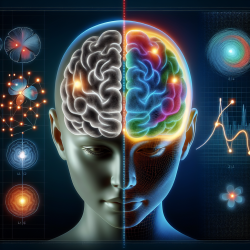Transforming Epilepsy Treatment with Deep Learning
In the realm of pediatric neurology, the challenge of managing epilepsy, particularly medication-resistant cases, is significant. More than a third of individuals with epilepsy are resistant to medication, making them candidates for surgical intervention. However, the success rate of surgery varies widely, with seizure freedom achieved in only 50% to 85% of cases. A recent breakthrough study titled Refining epileptogenic high-frequency oscillations using deep learning: a reverse engineering approach provides a new beacon of hope for improving these outcomes through the application of deep learning.
Harnessing the Power of Deep Learning
The study, conducted by a team from UCLA, explores the use of deep learning to refine the identification of epileptogenic high-frequency oscillations (eHFOs) in the brain. These oscillations are promising biomarkers for identifying epileptogenic zones, which are critical for successful surgical outcomes. The challenge lies in distinguishing eHFOs from non-epileptogenic oscillations, a task traditionally reliant on time-consuming and inconsistent human expert annotations.
By leveraging a deep learning-based algorithm, the researchers developed a model that not only replicates expert annotation with high accuracy but also autonomously identifies eHFOs. This novel approach utilizes a weakly supervised model to enhance the purification of eHFOs, achieving a 96.3% accuracy in artifact detection and an 86.5% accuracy in classifying oscillations with or without spikes.
Implications for Practitioners
For practitioners in speech language pathology and related fields, the implications of this study are profound. Implementing such advanced computational techniques can significantly enhance the precision of epilepsy treatment planning. Here’s how practitioners can leverage these findings:
- Adopt Data-Driven Approaches: Integrate deep learning models into clinical practice to improve the identification of epileptogenic zones, thereby increasing the likelihood of successful surgical outcomes.
- Encourage Interdisciplinary Collaboration: Collaborate with data scientists and neurologists to develop and refine algorithms tailored to specific patient populations.
- Invest in Training and Development: Stay abreast of technological advancements and invest in training to effectively utilize these tools in clinical settings.
Future Research Directions
While the study demonstrates the potential of deep learning in epilepsy treatment, it also opens avenues for further research. Practitioners are encouraged to explore the following areas:
- Expand Patient Cohorts: Conduct studies with larger and more diverse patient populations to validate and refine the model’s applicability across different demographics.
- Explore Other Neurological Disorders: Investigate the application of similar deep learning frameworks in other neurological conditions, potentially broadening the impact of these technologies.
- Enhance Model Interpretability: Work towards making deep learning models more interpretable to facilitate clinical decision-making and foster trust among practitioners.
Conclusion
The integration of deep learning into epilepsy treatment represents a transformative step forward, offering new hope for achieving better outcomes for children with medication-resistant epilepsy. By embracing these technological advancements, practitioners can play a pivotal role in shaping the future of neurological care.
To read the original research paper, please follow this link: Refining epileptogenic high-frequency oscillations using deep learning: a reverse engineering approach.










